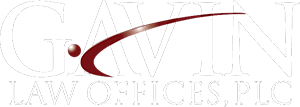Most internet users today recognize that internet searching and website visits lead to data collection and targeted advertising. For example, a search for coffee makers on Amazon is likely to lead to coffee maker advertisements on Facebook. What may be surprising, however, is the value companies place on your information, and the many ways data collectors mine for consumer data. Data collection, or lead generation, is estimated to be a multi-billion dollar industry,[1] with the largest industry player claiming to have, “on average, 1,500 pieces of information on more than 200 million Americans.”[2]
Lead generators obtain your information through a variety of sources. Perhaps the most well-known source is cookies, bits of information that are downloaded to your browser and can be used to determine when and where you saw an advertisement or what your interests might be based on the sites you visit. Lead generators also use less obvious sources, such as online fillable forms, including mortgage pre-qualification forms and online dating questionnaires, as well as “fun” surveys.[3] For example, the Huffington Post recently reported that a Google search for “McDonalds Jobs” resulted in an advertisement for the website <everyjobforme.com>, which linked to a form promising the user that it would “find McDonald Jobs near you” and requested the user’s name, zip code, and mobile number.[4] Once the personal information was entered, a recruiter for for-profit colleges would call regarding “educational opportunities.”[5] In addition, legitimate companies often grant third parties behind-the-scenes access to their websites, allowing these third parties to observe a visitor’s movement within the site.[6] A 60 Minutes report revealed that popular sites such as the New York Times’ website, among others, allow third party observers.[7] Finally, many retailers sell the data collected on consumers’ purchases, allowing lead generators to better understand what goods consumers are seeking and how to more effectively market those goods to individual consumers.
Currently, lead generation is a relatively unregulated industry, with little oversight from federal and state governments. In a 2013 review, the U.S. Government Accountability Office found there was no overarching federal law governing the collection of data or consumer privacy rights.[8] Instead, lead generation companies are governed through a patchwork of federal and state laws, as well as agency enforcement and self-regulation within the industry. One agency active in monitoring the lead generation industry is the Federal Trade Commission (FTC), which works to protect consumers from deceptive business practices. The FTC has used its administrative authority to fine lead generation companies for deceptive advertising, including a recent multi-million dollar settlement with multiple companies accused of unlawfully selling data obtained from payday loan applications, including social security numbers.[9] Some in the lead generation industry, however, believe that current FTC marketing guidelines are not being applied effectively and in some cases may even encourage misconduct.[10] The FTC is likely to update its guidelines soon to address these concerns. We will report further developments as they occur. — Stephanie Martinez
[1] Federal Trade Commission, Follow The Lead, An FTC Workshop on Lead Generation (Oct. 30, 2015), https://www.ftc.gov/system/files/documents/public_events/684511/leadgeneration-presentationslides_0.pdf.
[2] Steve Kroft, The Data Brokers: Selling Your Personal Information (Mar. 9, 2014), http://www.cbsnews.com/news/the-data-brokers-selling-your-personal-information/.
[3] Id.
[4] David Halperin, For-Profit College Recruiter Hides Behind McDonalds Arches, Huffington Post (Mar. 1, 2016, 4:54 PM), http://www.huffingtonpost.com/davidhalperin/for-profit-college-recrui_b_9359434.html.
[5] Id.
[6] Kroft, supra note 2.
[7] Id.
[8] U.S. Government Accountability Office, Information Resellers: Consumer Privacy Framework Needs to Reflect Changes in Technology and the Marketplace (Sept. 25, 2013), http://www.gao.gov/products/GAO-13-663.
[9] Lexology, FTC Settles Charges with Data Brokers for Misuse of Consumer Data (Feb. 24, 2016), http://www.lexology.com/library/detail.aspx?g=2fa892c5-e828-4c28-8822-9505dc779005. The FTC has previously gone after other bad actors in the lead generation industry. In 2014 the FTC fined a mortgage lead generator $500,000 after it found that the company deceived potential borrowers with ads falsely claiming that borrowers could refinance their mortgages for free. Federal Trade Commission, Mortgage Lead Generator Will Pay $500,000 to Settle FTC Charges That It Deceptively Advertised Mortgage Refinancing (Sept. 12, 2014), https://www.ftc.gov/news-events/press-releases/2014/09/mortgage-lead-generator-will-pay-500000-settle-ftc-charges-it.
[10] Lexology, FTC Focuses on Lead Generation Practices In Higher Education and Ed Tech (Nov. 10, 2015), http://www.lexology.com/library/detail.aspx?g=5bd60940-c267-43f7-98cd-d712704d751b.
